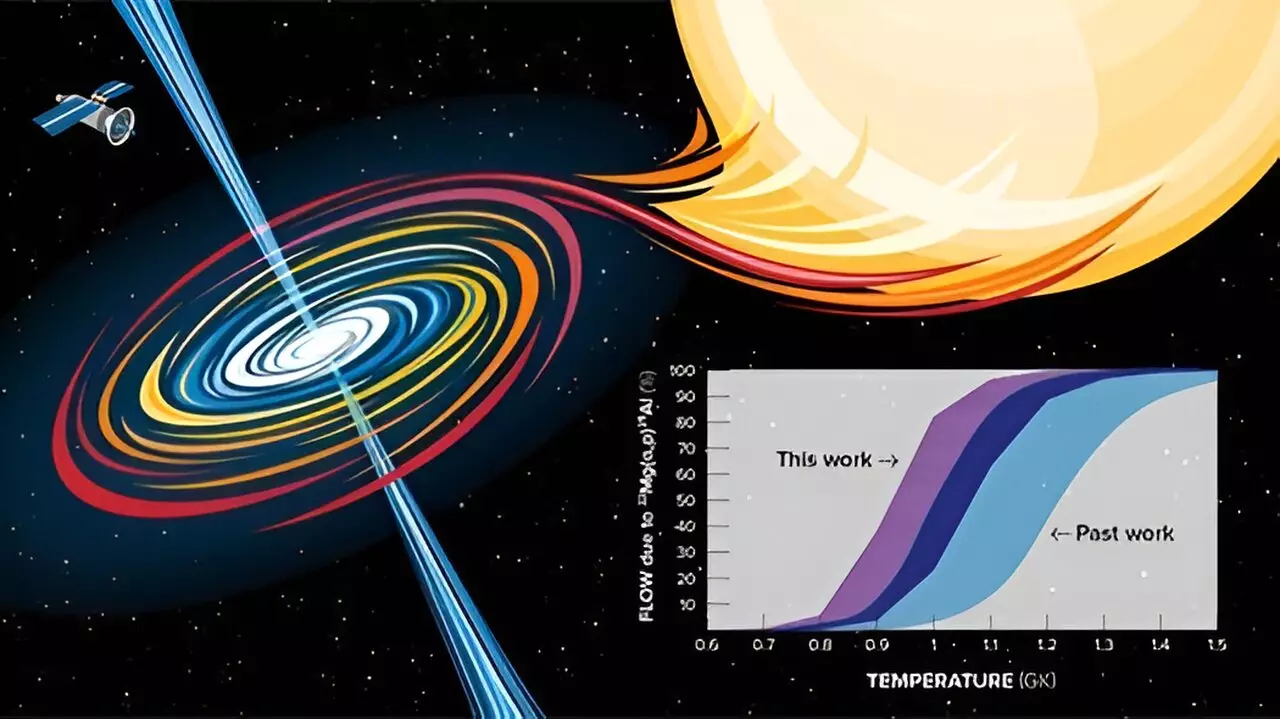X-ray bursts (XRBs) are violent explosions that take place on the surface of a neutron star as it absorbs material from a companion star. These explosions are triggered by increasing temperatures and densities on the surface of the neutron star, leading to a cascade of thermonuclear reactions that result in the creation of heavy chemical elements.
A recent study published in Physical Review Letters delved into one of these reactions, specifically the 22Mg(α,p)25Al reaction involving magnesium-22 and helium-4, which produces a proton and aluminum-25. This reaction plays a crucial role in shaping our understanding of XRBs and the mechanisms that drive these explosive events. The researchers discovered that the rate of this reaction is four times higher than previously measured, shedding new light on the processes that power XRBs.
Experimental Methodology and Results
To investigate the 22Mg(α,p)25Al reaction, scientists utilized the Argonne Tandem Linac Accelerator System (ATLAS) in an inverse kinematics setup. By creating an in-flight radioactive beam and directing it towards a detector filled with pure helium gas, researchers were able to simulate the conditions relevant to XRBs. The experiment yielded a new measurement of the angle and energy-integrated cross-section of the reaction, indicating a higher probability of occurrence than previously believed.
The higher rate of the 22Mg(α,p)25Al reaction suggests that the magnesium-22 waiting point may be bypassed more frequently in XRBs, allowing for the continued synthesis of heavier elements. Additionally, the experiment revealed that the reaction initiates at lower temperatures than previously assumed, providing valuable insights into the nucleosynthesis reaction flow through the magnesium-22 waiting point in XRBs.
By accurately determining the rates of reactions like 22Mg(α,p)25Al at critical waiting points, scientists can refine their models of XRBs and deepen their comprehension of the nuclear processes responsible for these explosive phenomena. The findings from this study not only contribute to our knowledge of XRBs but also showcase the importance of experimental techniques like inverse kinematics in uncovering the complexities of nuclear reactions in extreme astrophysical environments.
The investigation into the 22Mg(α,p)25Al reaction highlights the intricate interplay of nuclear processes within XRBs and underscores the significance of precise measurements in advancing our understanding of these cosmic events. By pushing the boundaries of experimental physics, researchers continue to unravel the mysteries of astrophysical phenomena and pave the way for future discoveries in the field of nuclear astrophysics.


Leave a Reply